One pulls with lightning speed.
The other pulls like a freight train.
At first glance, the Siberian Husky and Alaskan Malamute look like long-lost twins—icy eyes, thick coats, and a wolfish air. But beneath the fluff? Two wildly different powerhouses.
One was bred to run, sleek and fast across endless tundra.
The other was built to haul, muscle-packed and unshakably strong.
They may share snow in their veins, but their personalities, work ethics, and even stubborn streaks come from very different places.
Whether you’re dreaming of a running buddy or a loyal beast built for the cold, knowing what separates these two canines will make all the difference.
Let’s break down the myths, the facts, and the fluff—literally.
Size and Build
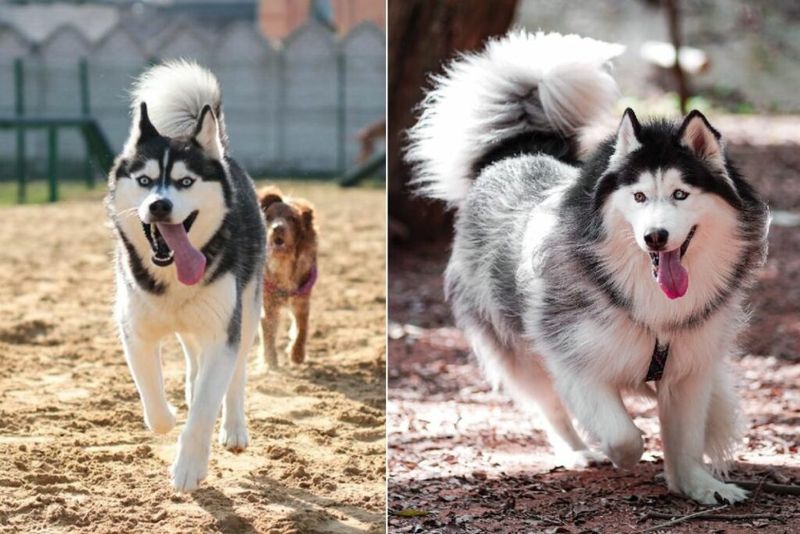
The Siberian Husky is known for its compact and agile build, making it suitable for quick movements and endurance. In contrast, the Alaskan Malamute boasts a more substantial and robust frame, designed for heavy hauling and strength.
This difference in size is one of the most noticeable traits that set them apart. While Huskies are more sprightly and nimble, Malamutes exude power and stability.
A Malamute’s physical presence is commanding, often overshadowing the Husky’s lighter demeanor. These size distinctions are not just aesthetic but also functional, reflecting their historical roles.
Coat and Colors

Huskies delight in a spectrum of colors, from black and white to red and even agouti, each as captivating as the next. Their coats are typically smooth and medium in length.
Malamutes, however, embrace a more traditional palette of gray and white, occasionally with a splash of black. Their fur is dense and plush, offering warmth in the harshest of climates.
This luxurious coat not only sets a visual distinction but also serves a practical purpose. The thickness of a Malamute’s coat is tailor-made for enduring the Alaskan chill.
Temperament and Behavior
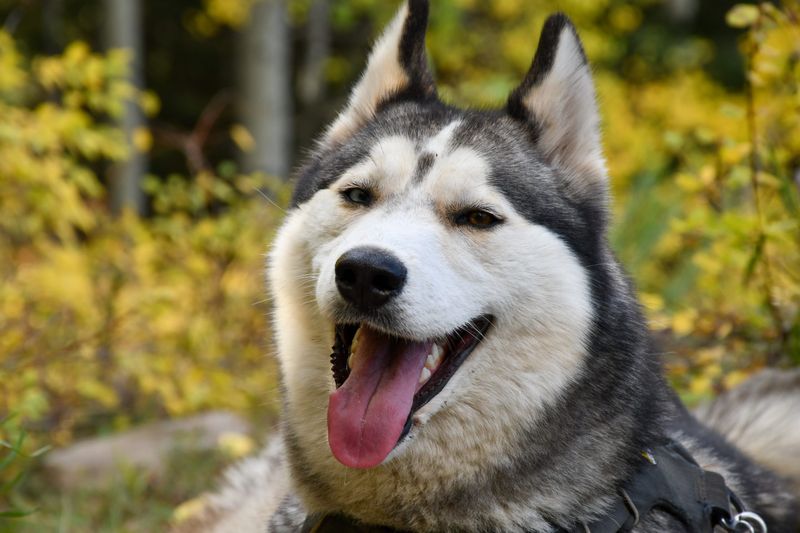
Huskies are known for their playful and mischievous nature. Their curiosity often leads them on adventurous escapades, much to the delight of their owners.
Malamutes, in contrast, are more reserved, exuding a calm and dignified demeanor. This difference in temperament is significant and influences their suitability as companions.
A Husky’s lively antics can be both entertaining and challenging, while a Malamute’s steady presence offers comfort and reliability. Together, their personalities embody a spectrum of canine charisma, each dog a unique individual.
Historical Roles
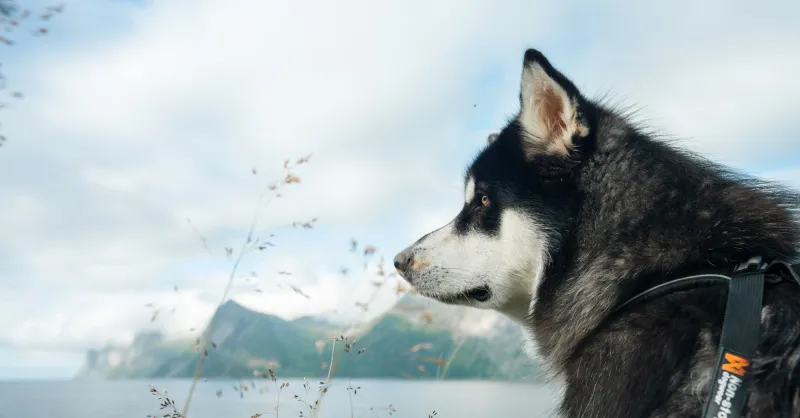
Historically, Huskies were bred for speed and endurance, their agile bodies perfect for sled races across vast Siberian landscapes.
Malamutes, however, were the heavy lifters, bred to haul freight and assist in hunting large game in Alaskan terrains. These roles have deeply influenced their physical and behavioral traits. While Huskies are sprinters, Malamutes are built for power and perseverance.
This distinction is a testament to their origins and the functional needs of the communities that relied on them. Their historical purposes continue to influence their personalities today.
Vocalization and Communication
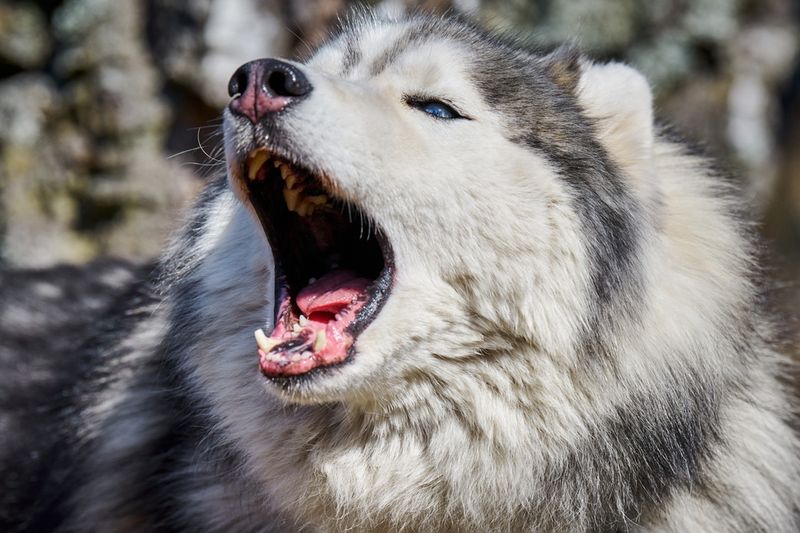
Huskies are famously vocal, their howls resonating with stories of the wild. They communicate with a range of sounds, from howls to chirps, each carrying a unique message.
Malamutes, on the other hand, are known for their distinctive “woo-woo” sounds and a quieter disposition. This difference in vocal behavior highlights their unique ways of interacting with humans and each other.
While a Husky’s voice might fill the air with vibrant energy, a Malamute’s quieter tones offer a more subdued and mysterious charm. Their vocalizations are as characteristic as their appearances.
Exercise Needs
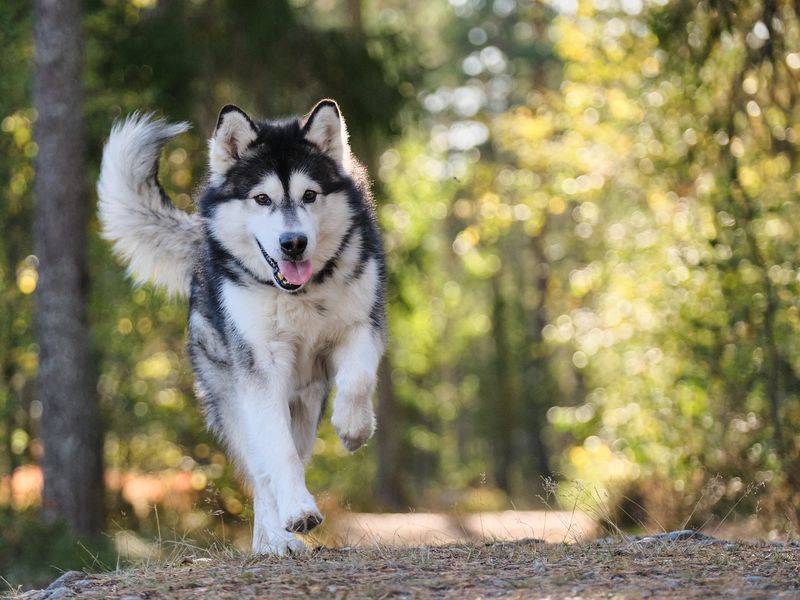
Huskies are known for their boundless energy and need extensive exercise to keep them happy and healthy. Their spirited nature often requires regular, vigorous activity to prevent restlessness.
Malamutes, while also active, tend to have a more moderate energy level. A long walk or play session usually suffices to satisfy their physical needs. This difference in exercise requirements is a crucial consideration for potential owners.
Providing adequate activity for a Husky can be a lively engagement, whereas Malamute owners might enjoy a more relaxed routine. Each breed brings its unique pace to life.
Social Interaction
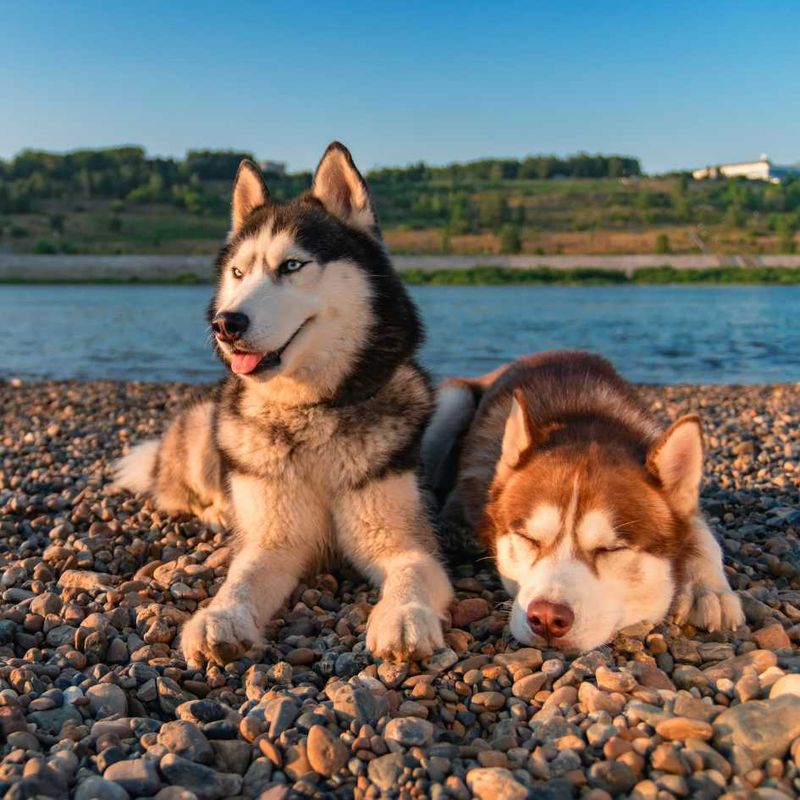
Huskies are social butterflies, thriving in environments with ample interaction and stimulation. They often charm their way into the hearts of strangers with ease.
Malamutes, however, can be more selective with their affections, sometimes appearing aloof around newcomers. This distinction makes Huskies well-suited to active homes with lots of social opportunities. In contrast, Malamutes might prefer a more intimate circle of acquaintances.
Understanding these social dynamics is vital for fostering a harmonious household with these breeds. Their unique approach to interaction adds to their distinct allure.
Trainability and Intelligence
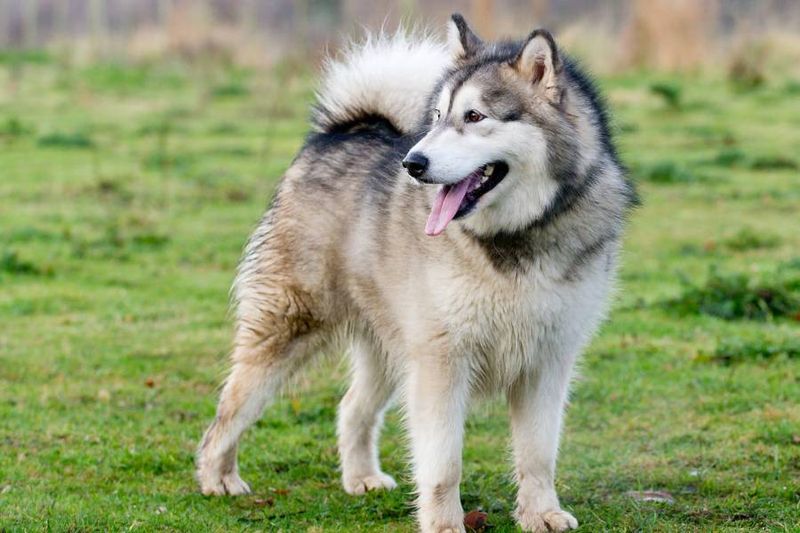
Huskies are incredibly intelligent, often mastering commands with speed. Yet, their independent nature can make training a playful challenge.
Malamutes are equally intelligent but may require more patience and consistency. Their stubborn streak is legendary, sometimes testing the resolve of even experienced trainers. This difference in trainability reflects their independent spirits.
Where a Husky might quickly learn a new trick, a Malamute might ponder the task, choosing to complete it on its terms. These breeds present unique training journeys, each rewarding in its way.
Lifespan and Health
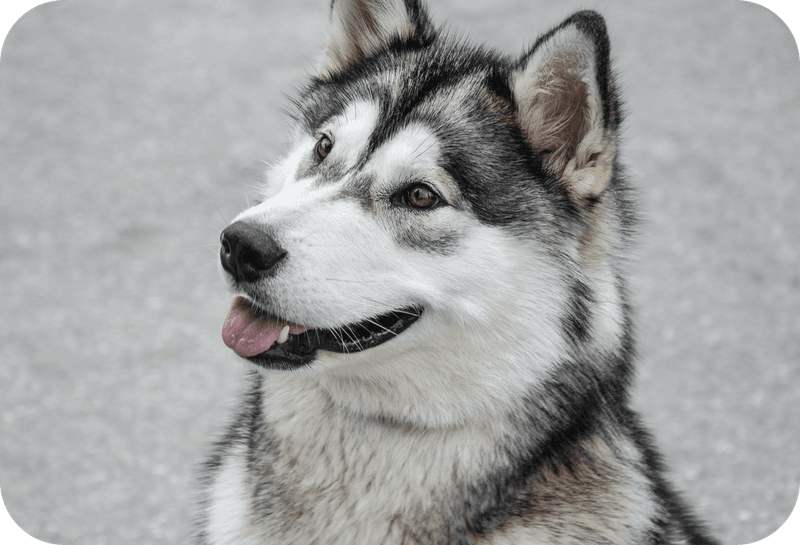
Huskies generally enjoy a longer lifespan, often living between 12 to 15 years. Malamutes typically have a slightly shorter life expectancy, around 10 to 14 years.
This variance is important for potential owners considering the long-term commitment of these breeds. Both breeds are generally healthy but have their respective predispositions to certain conditions. Huskies can be prone to eye issues, while Malamutes may face joint concerns.
Regular veterinary care and a healthy lifestyle are crucial for both breeds. Understanding these aspects ensures a fulfilling partnership with either companion.
Dietary Needs

The dietary requirements of Huskies and Malamutes reflect their distinct energy needs and physical builds. Huskies, with their high energy levels, benefit from a protein-rich diet to fuel their activity.
Malamutes, being larger and more robust, require a diet that accommodates their size and nutrient demands. This divergence in nutritional needs underscores the importance of tailored feeding strategies.
Providing the right diet not only supports their physical health but also enhances overall well-being. Owners must consider these dietary distinctions to ensure their pet’s vitality and longevity.

